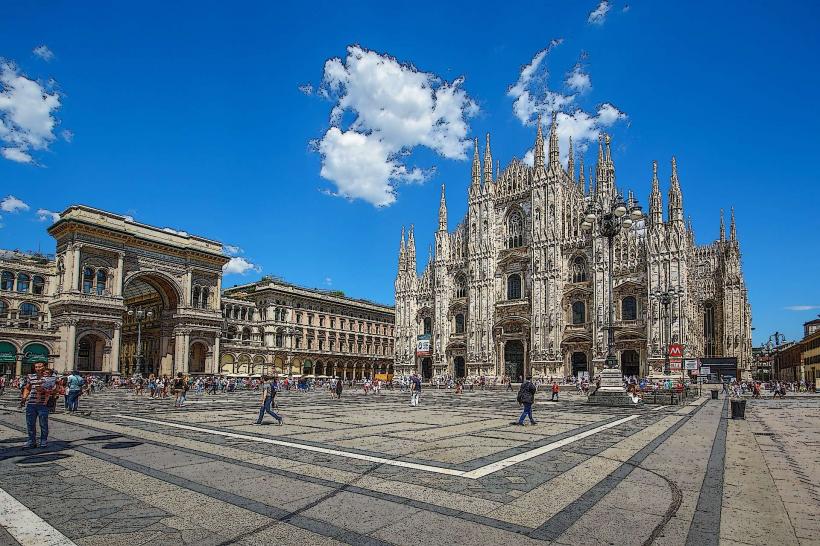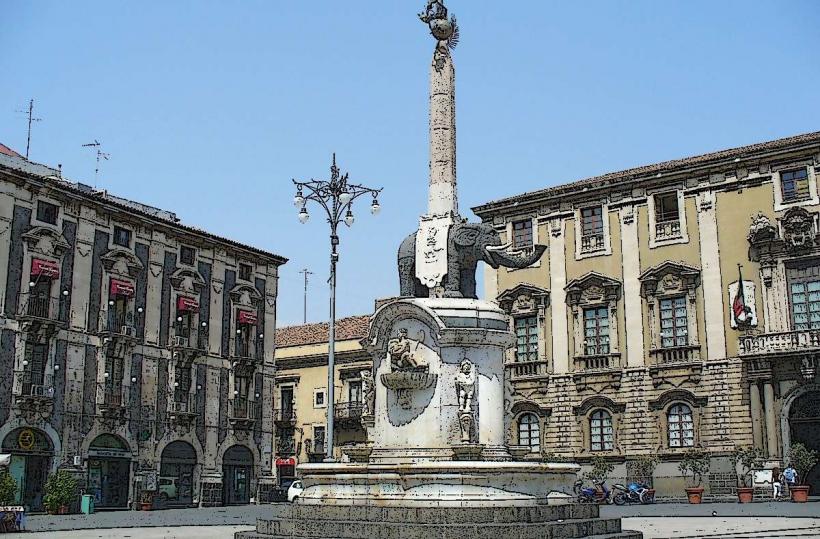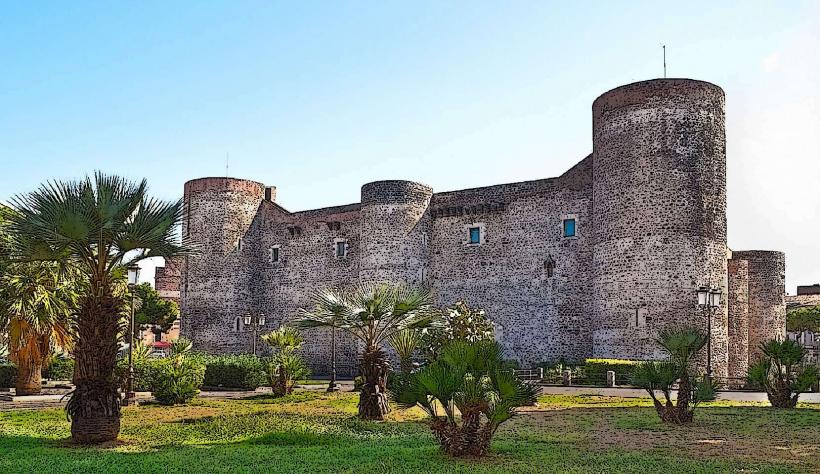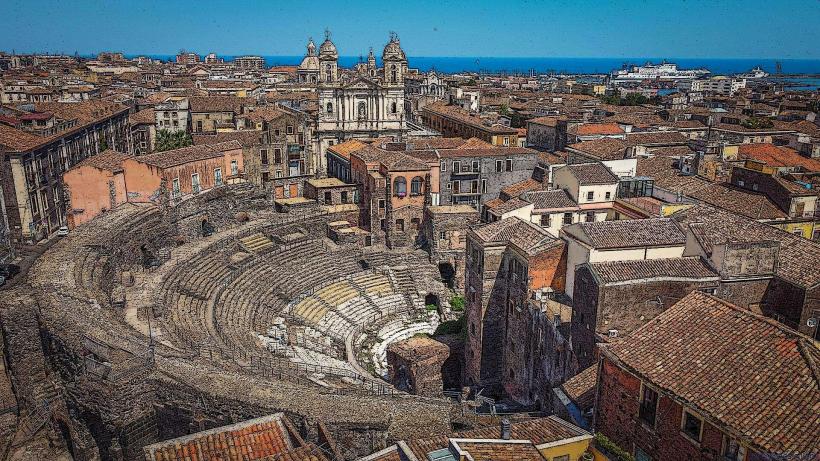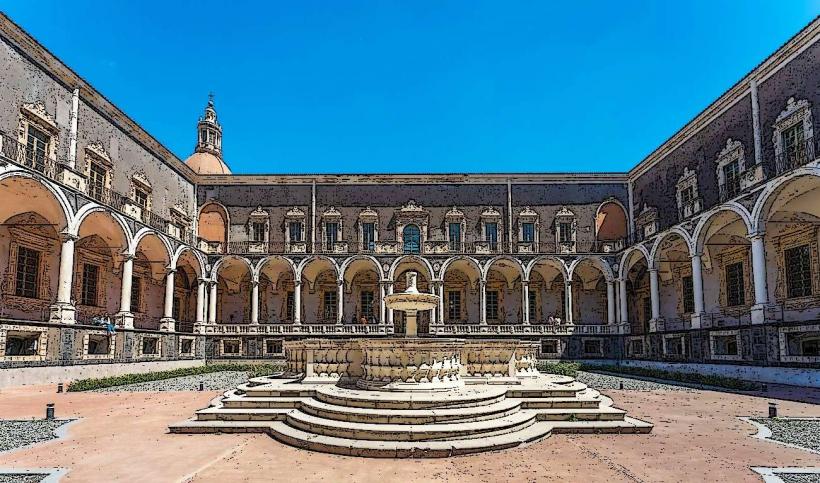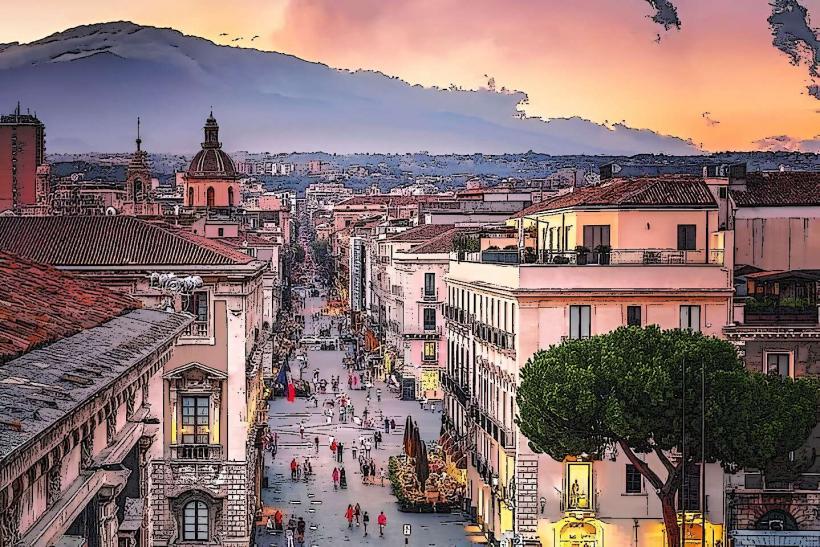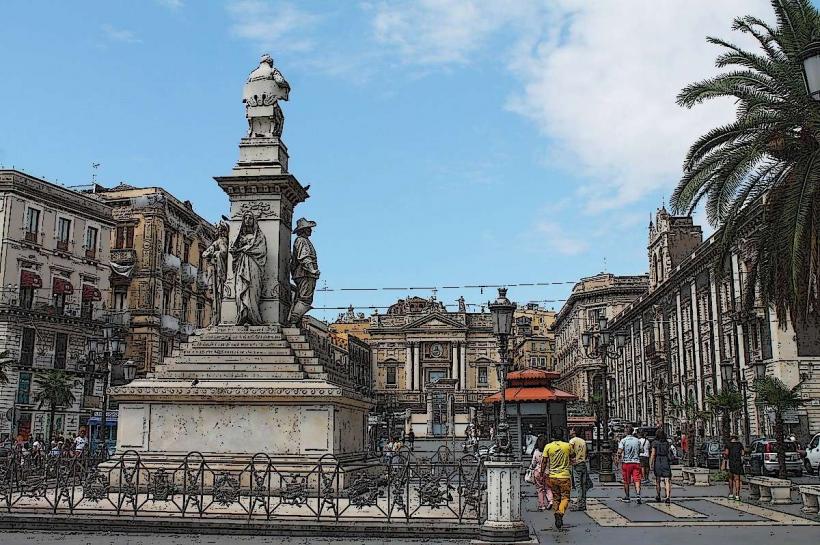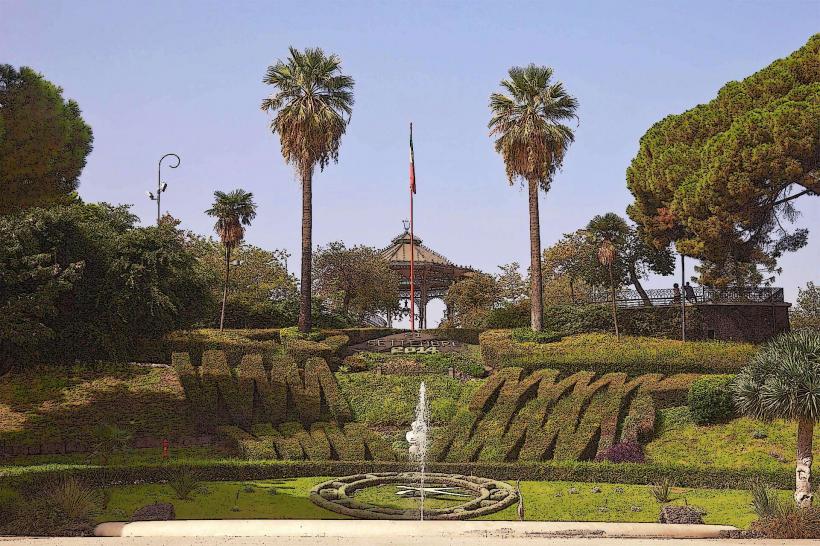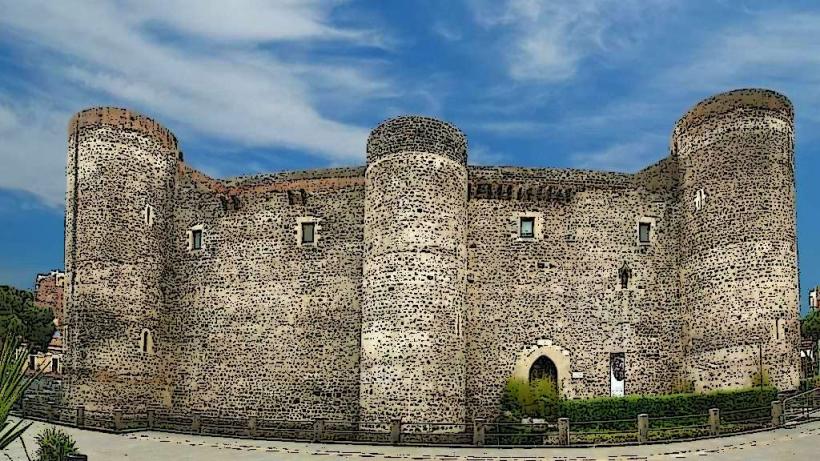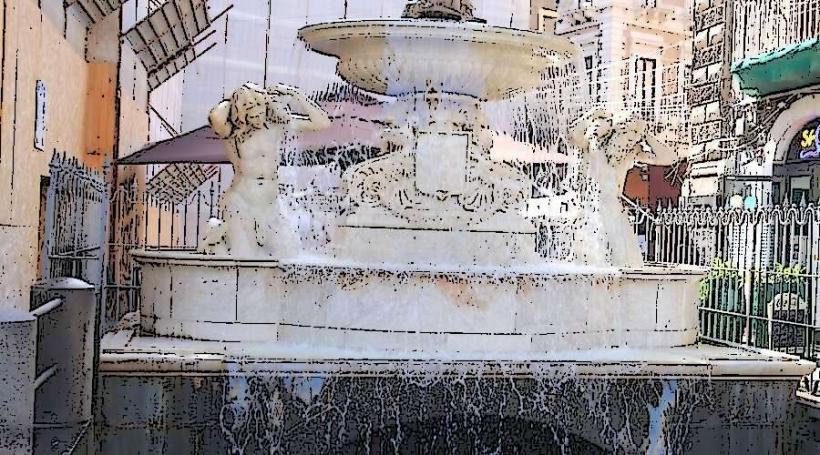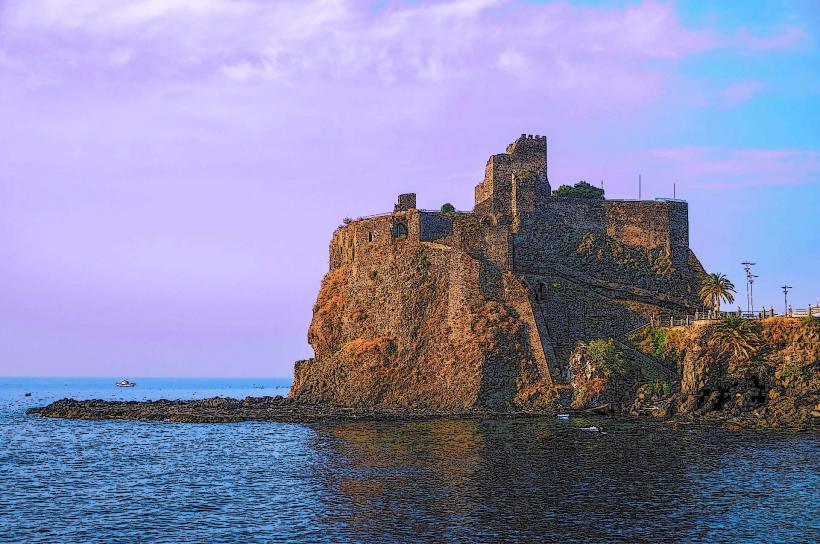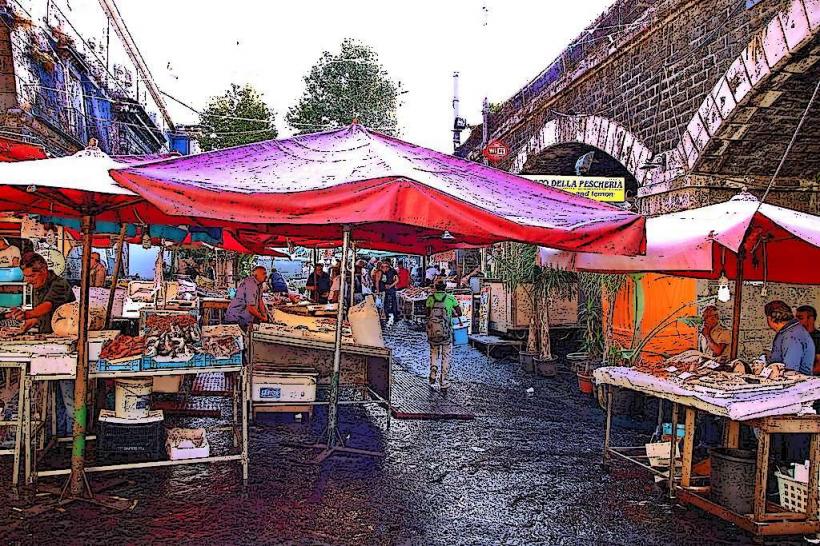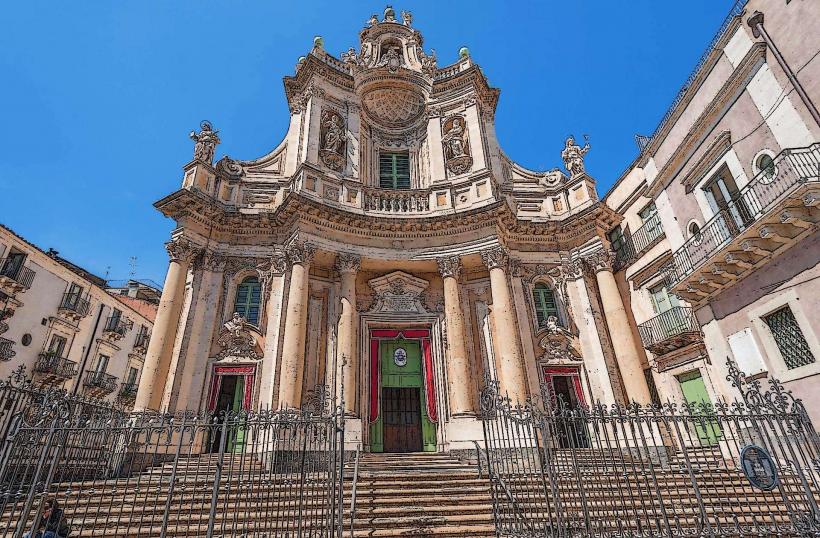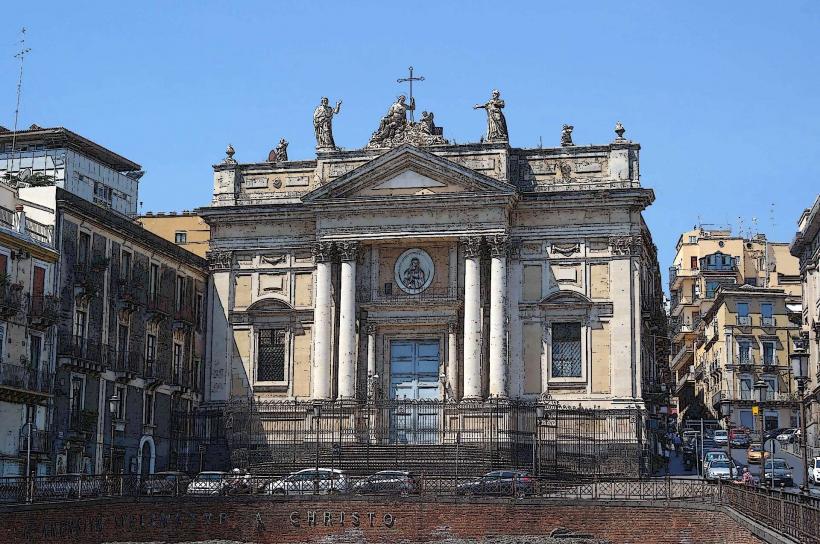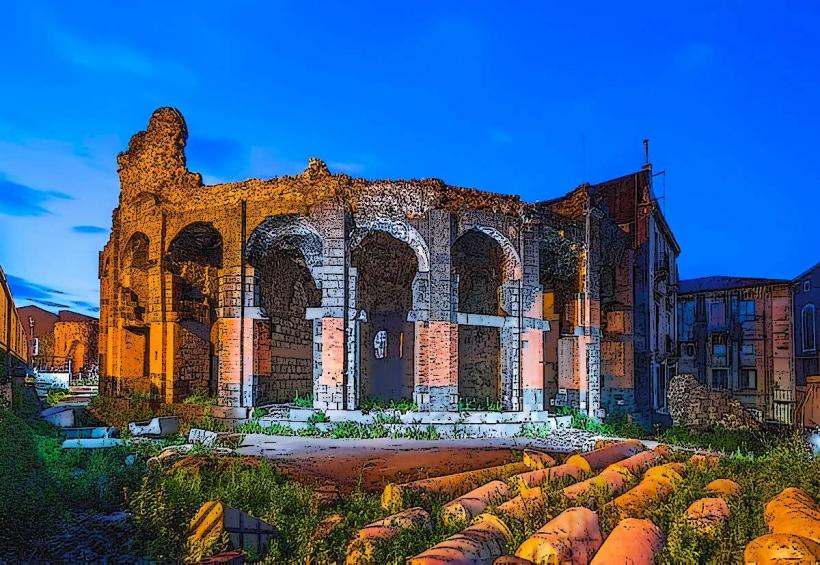Information
Landmark: Cattedrale di Sant AgataCity: Catania
Country: Italy
Continent: Europe
The Catania Cathedral (Italian: Cattedrale di Sant'Agata) is one of the most significant landmarks in the city of Catania, Sicily. Dedicated to Saint Agatha, the patron saint of Catania, the cathedral is a stunning example of Sicilian Baroque architecture and plays a central role in the religious and cultural life of the city. Here’s a detailed look at the cathedral:
1. Historical Background
- Foundation and Early History: The original church on the site was built in the 11th century by the Norman rulers, although it was likely preceded by a Roman temple dedicated to Zeus. The cathedral has undergone multiple reconstructions due to several disasters, including the devastating 1693 earthquake that caused significant damage to the city and the building.
- Reconstruction: After the earthquake, the cathedral was rebuilt in the Baroque style under the supervision of Giovanni Battista Vaccarini, one of Sicily’s leading Baroque architects. The work was completed in the early 18th century, and the cathedral retains much of its Baroque design today.
2. Architectural Features
- Facade: The cathedral’s facade is a stunning example of Sicilian Baroque architecture. It features a grand staircase, a central portal, and twin bell towers. The facade is made of lava stone, which is characteristic of Catania’s volcanic landscape, and is adorned with sculptures, columns, and intricate details.
- Interior: The interior of Catania Cathedral is equally impressive, featuring a large nave with high arches, ornate columns, and a vaulted ceiling. The design of the interior blends Baroque elements with touches of Norman and Renaissance styles, reflecting the cathedral’s long history of reconstruction.
- The chapels are richly decorated, and the high altar is adorned with a magnificent sculptural group. The cathedral is known for its dramatic use of light and its grandiose proportions that enhance the sense of space and reverence.
- Tombs of the Aragonese Kings: In one of the chapels of the cathedral lies the tomb of Frederick II of Aragon and his wife Constance of Aragon, both important historical figures of the medieval period.
3. The Patron Saint Agatha
- Saint Agatha: The cathedral is dedicated to Saint Agatha, a Christian martyr and the patron saint of Catania. According to tradition, Saint Agatha was a noblewoman from Catania who was martyred in 251 AD by the Roman governor Quintianus. She was subjected to horrific torture, and her relics are housed in the cathedral, where they are venerated by the faithful.
- Feast of Saint Agatha: The Feast of Saint Agatha is one of the most important events in Catania’s religious calendar. Held every year from February 3rd to 5th, the festival includes a grand procession where the saint's relics are carried through the streets of the city. Thousands of pilgrims and locals gather in and around the cathedral during the feast, making it a time of intense spiritual significance.
4. Key Features and Artworks
- Altar and Chapel of Saint Agatha: One of the most important parts of the cathedral is the Chapel of Saint Agatha, which contains a silver altar that houses her relics. The altar is richly decorated, and the relics are displayed in a special reliquary.
- Mosaics and Paintings: The interior is adorned with fine mosaics, many of which depict scenes from the life of Saint Agatha. There are also Baroque paintings by famous artists of the era, including works that depict the martyrdom of Saint Agatha and scenes from the lives of saints.
- Famous Bell Tower: The cathedral’s bell tower, which stands tall on the square, is a prominent feature of the building’s architecture. The bells chime at significant moments during the day, especially during religious services.
5. The Bell Tower and Piazzetta
- The bell tower is an iconic element of the cathedral’s skyline and is one of the tallest structures in Catania. It stands in the Piazza del Duomo and is often depicted in photos of the city’s central square.
- Piazzetta del Duomo: The area surrounding the cathedral is a lively part of Catania, known as Piazza del Duomo. The square, with its Elephant Fountain and the Palazzo degli Elefanti, is a hub for both locals and tourists, with the cathedral as its centerpiece.
6. Cultural and Religious Importance
- Religious Significance: Catania Cathedral is the city’s primary religious site and plays a major role in the spiritual life of the people. It is not only a place for daily worship but also for annual liturgical celebrations, including important events surrounding Saint Agatha’s feast.
- Tourism: As one of Catania’s most visited landmarks, the cathedral attracts both religious pilgrims and secular tourists. It is a must-see site for anyone visiting the city, offering a blend of religious history, architectural beauty, and cultural depth.
- UNESCO World Heritage: The Catania Cathedral is part of the UNESCO World Heritage site that includes the city of Catania and the other Baroque towns of eastern Sicily, highlighting its exceptional historical and architectural value.
7. Restoration and Preservation
- The cathedral, like many buildings in Catania, has been subject to various restoration efforts, especially after the 1693 earthquake. Since then, it has been carefully preserved and maintained, with ongoing efforts to ensure that the cathedral’s historic features remain intact for future generations.
- Over the centuries, the cathedral has been damaged by lava flows from Mount Etna, but each time, it has been rebuilt and restored, symbolizing the resilience of the city and its people.
8. Conclusion
The Catania Cathedral is an architectural and spiritual treasure of Sicily. Its Baroque grandeur, historical significance, and deep connection to the life and martyrdom of Saint Agatha make it one of the most important religious buildings in Sicily. Whether visiting for religious purposes, admiring the artistic treasures, or taking part in the celebrations during the Feast of Saint Agatha, the cathedral is an essential experience for anyone exploring Catania.


